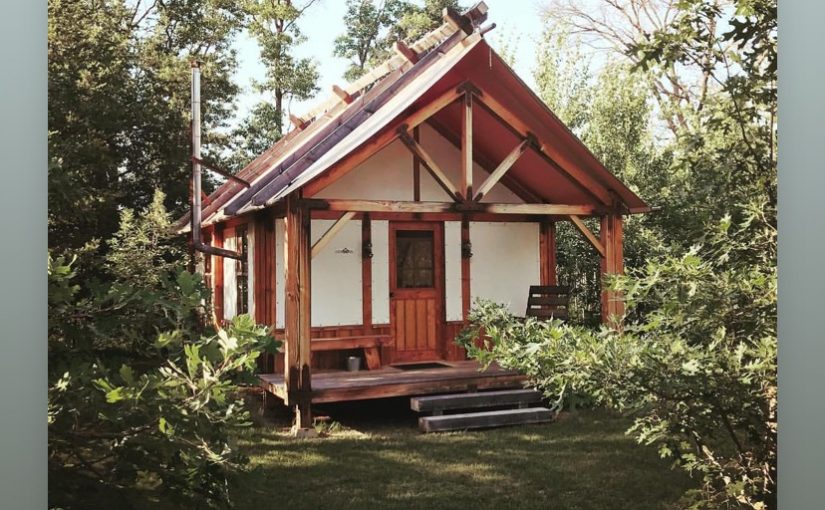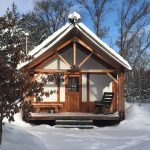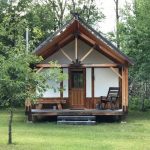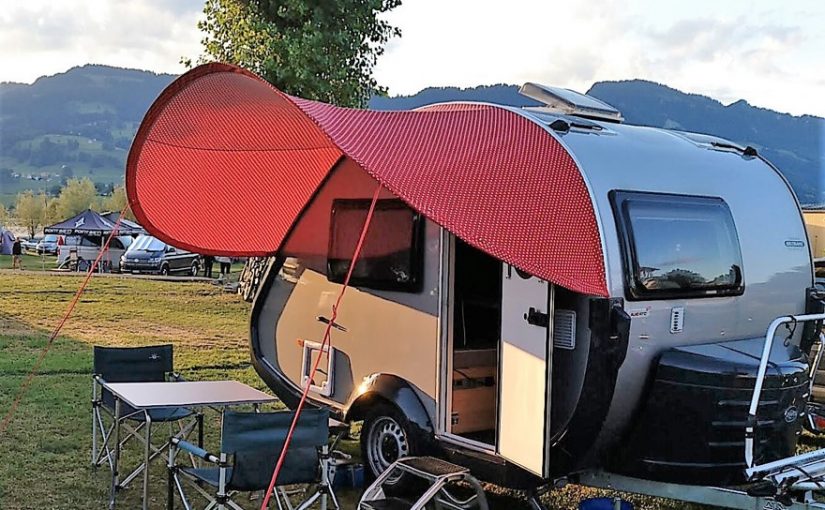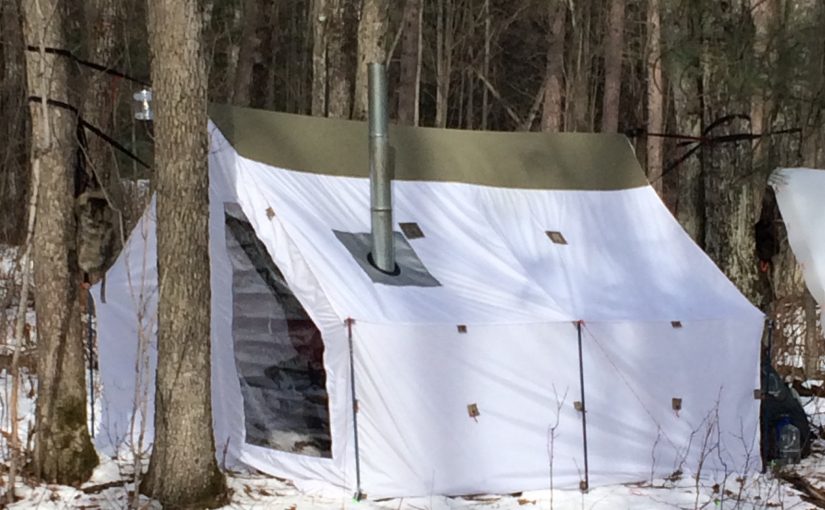Imagine a quiet evening in the woods — you’re sitting by the campfire, and as the night draws to a close, you cozy up in your very own tent-cabin. For many people, spending time in the wilderness brings joy, tranquility and peace of mind. And while the casual camper might be content with a tent or pop-up camper, the more serious outdoorsman, like Scott Miller, seeks something bigger and better (and vastly more permanent). As both an inventive spirit and an outdoor aficionado based in Northeast Wisconsin, Scott was more than happy to share his journey into the wild with us and explain how Sailrite® could play a part in bringing his creative vision of totally unique cabins to life.
Scott has been in the design and wood fabrication business for over two decades, mostly focusing on heavy timber projects. No stranger to rugged terrain, he’s camped everywhere from upstate New York to Alaska. He even attended the Pat Wolfe School of Log Building in Ontario, Canada, and studied the craft of log and timber frame construction to truly hone in on this discipline and turn it into a viable career.

He’s always longed to get away and enjoy the wilderness in an effort to recapture the simplicity of Henry David Thoreau’s famous nonfiction novel, “Walden.” The popular true story was written in 1854 and describes Thoreau’s time spent living alone in a cabin at Walden Pond, near Concord, Massachusetts, — a simple life in the solitude of the forest. By the end of the Thoreau’s tale, he feels more at peace with himself and all living things around him, a peace that comes from being one with nature.
This harmony between both nature and the human mind truly resonated with Scott and was the driving force behind his most popular DIY creation to date. “My appreciation for the outdoors and camping inspired me to design a tent-cabin that could be enjoyed year-round.” As a seasoned craftsman, Scott had already been designing and creating several styles of tent-cabins for himself and felt confident in his abilities. But he also realized that this new style of tent-cabin would require a more streamlined effort if he was to make a successful business out of creating and selling them.

With a desire to comingle his ingenuity and craftsmanship, all that Scott needed to take his cabin-making venture to the next level was a dependable, heavy-duty sewing machine capable of tackling the thick canvas found on the tent-cabins. So, like any savvy businessman, he took to the internet to start researching his options. That’s where he stumbled upon Sailrite, took the plunge on his DIY journey, and began his foray into sewing.
“I started sewing in 2015 after purchasing an Ultrafeed® LSZ Sewing Machine. I really like the compact style of the LSZ and its robust power. I learned to sew after watching Sailrite how-to videos and from books I purchased. Then in 2018, I was excited to see the release of the industrial Fabricator® Sewing Machine and bought one immediately.”

Built for the avid backwoodsman (or woman), Scott’s cabins are compact, comfortable lodgings not to be confused with a yurt, a tiny house or any other more livable dwellings. In his own words, these cabins are built for those looking for an authentic American camping experience with a style and amenities similar to those found in the cabins of the 1860s. Scott explained that “I’m mainly interested in the United States market, as the tent-cabin is part of our American history. They were lived in throughout mining camps in the West.”
As an amalgamation of imagination and traditional techniques, Scott was kind enough to explain the painstaking process that goes into each and every one of his tent-cabins.
“I design the tent-cabins on a sophisticated CAD (Computer-Aided Design) program used for wood design. I create a 3D model of the tent-cabin and produce shop drawings for fabrication. My son does help me when I need it, which I really appreciate. His review of my CAD drawings and help with the layout work is great. All my tent cabins come as a precut kit. Tent-cabin making is an ‘art form and craft’ and is gradually turning into a business of making tent-cabins for others. I’ve made eight tent-cabins so far and they usually take five to seven weeks to make, depending on the style.”
Although these tent-cabins come as kits that must be assembled by the customer, a great deal of thought and preparation goes into each one before they’re sent to their new home. And Sailrite is there to help every step of the way! Scott explained that, “I am extremely happy with all the products from Sailrite. I use the 1/2-inch basting tape for sewing the canvas and I also use hole punches, thread and grommets.”
And of course, the Ultrafeed LSZ and Fabricator help to sew the heavy canvas for all the canvas tents, as the roof and walls of the cabins are made of heavy-duty cotton army duck canvas pruchased from Sailrite. The tent-cabin is precut and marked for all screw locations and assembly drawings are included. The customer then erects the wooden tent-cabin frame based on the assembly drawings and, as the final step, attaches the canvas to the frame.

“These tent-cabins are not portable, but they’re not entirely permanent either. They’re popular with folks who own acreage or need a cabin for hunting or fishing. They might be set near a lake, along a river, or on a wooded lot. If someone needs a place to write, do art, a nice garden structure, or just to relax while enjoying nature, these tent-cabins are great.”
So what’s next for this environmental entrepreneur? Bolstered by his success in the DIY world, Scott explained to us that he enjoys sewing so much now that he’s even planned to tackle a number of non-cabin-related sewing projects in the future and is always open to new ideas. But for now, it’s fulfilling enough for Scott to connect with nature through his cabin creations.
“The most rewarding part of my work is providing a product for others to enjoy.”
Who We Are
Sailrite is your one-stop DIY shop! We are a passionate crew of do-it-yourselfers who strive to equip you with the supplies and how-to knowledge you need to tackle your next project. Do you want to learn upholstery, leatherwork, canvaswork, hobby sewing, bag making or more? We have the fabric, tools, hardware, sewing machines and notions you need to master any DIY. And even if you’ve never sewn before, our tutorials and how-to videos are designed for beginners and experienced crafters alike.
Start your DIY journey today: www.sailrite.com

